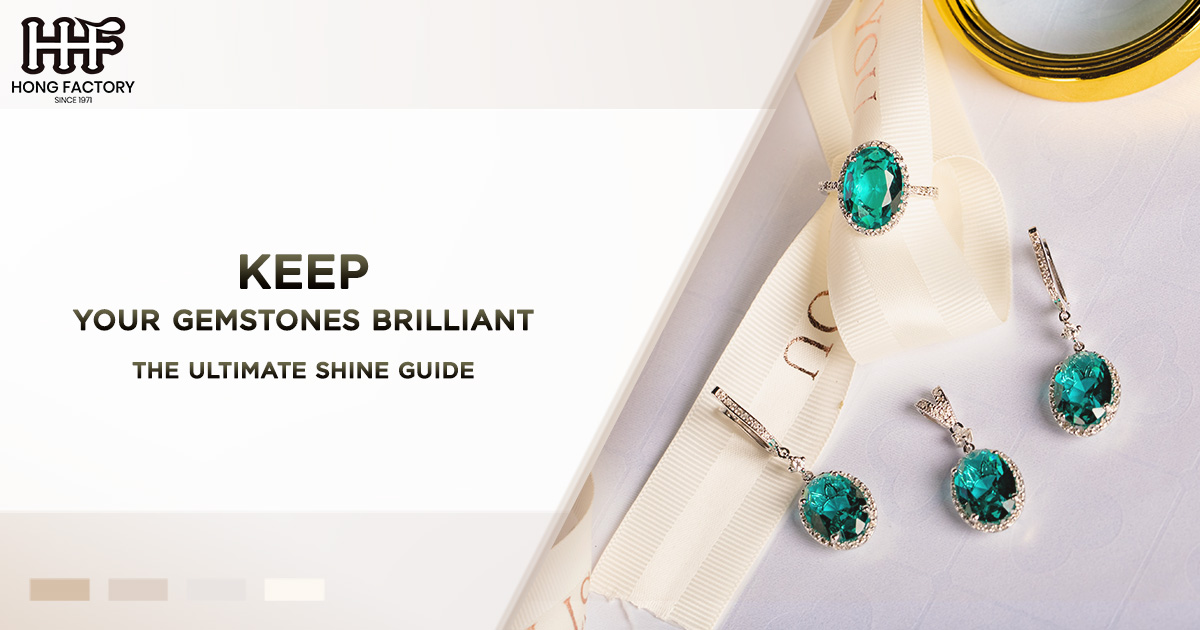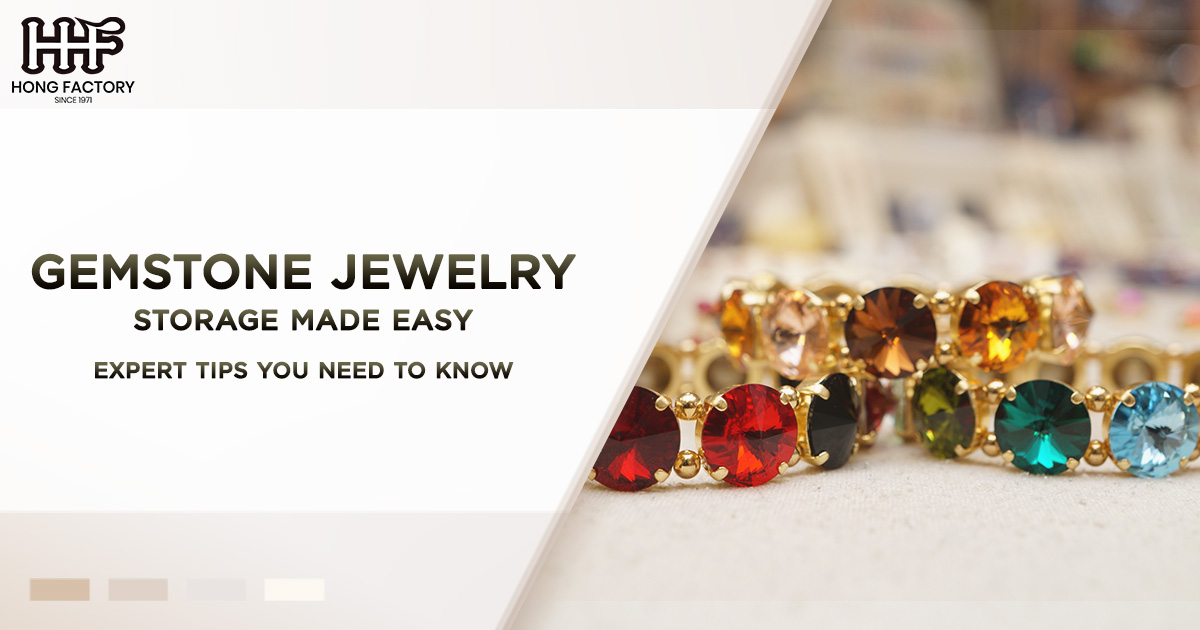Proper storage of gemstone jewelry is essential to maintain its beauty, longevity, and value. Gemstone pieces often hold emotional and financial significance, so taking care of them is a top priority. Whether you’re a collector or someone who loves to accessorize daily, knowing how to store your gemstone jewelry with a focus on organization, protection, and accessibility can save you time, money, and stress. In this guide, we’ll share expert tips to help you store your precious gemstone jewelry safely and efficiently.
Why Proper Storage Matters for Gemstone Jewelry
Gemstones are delicate and can suffer from scratches, discoloration, or even breakage if they’re not correctly stored. Exposure to moisture, chemicals, and physical impact can also cause permanent damage. By prioritizing organization, protection, and accessibility, you can keep your jewelry pristine and instantly ready to wear for any occasion.
Expert Tips for Organization of Gemstone Jewelry
One of the biggest challenges of owning gemstone jewelry is keeping it organized, especially if you have a large collection or a variety of pieces. Disorganized jewelry often leads to tangling, scratches, or even loss. Here’s how to stay on top of your jewelry organization :
1. Categorize Your Jewelry
Separate your jewelry by type, material, or purpose. For instance :
- Group necklaces, earrings, bracelets, and rings separately.
- Categorize by gemstone types, such as diamonds, emeralds, or sapphires.
- Designate pieces for daily use versus special occasions.
This approach not only keeps your collection tidy but also ensures that gemstones with different hardness levels won’t scratch each other.
2. Use Jewelry Boxes with Dividers
Invest in a jewelry box with compartments or dividers. These allow you to :
- Keep each gemstone piece in its own section to prevent tangling and scratches.
- Easily locate specific items without rummaging.
Look for boxes lined with soft, non-abrasive materials like velvet or suede, which offer extra protection for delicate gemstones.
3. Opt for Transparent Storage Solutions
If you want even easier access, use clear storage boxes or organizers. This allows you to see your collection at a glance without having to open multiple cases. Transparent lids also protect your jewelry from dust while ensuring accessibility.
4. Label Your Storage
Labeling compartments or drawers ensures you always know where each piece belongs. For example :
- A designated section for opals, which are highly sensitive to moisture.
- A separate area for diamonds and harder gemstones.
This visual and systematic storage approach is perfect for maintaining both organization and accessibility.
Mastering the Protection of Gemstone Jewelry
Protection is crucial to ensure that your gemstone jewelry remains in pristine condition. Poor storage can lead to irreversible scratches, dullness, or even physical damage. Follow these protection tips to safeguard your collection :
1. Store Gemstones Individually
Certain gemstones have unique physical properties and hardness levels. For example :
- Diamonds, being the hardest material, can scratch other gemstones when stored together.
- Softer stones like pearls, turquoise, and opals are more prone to damage.
Wrap each individual piece in soft cloth or store it in separate compartments to keep them from coming into contact with one another.
2. Keep Jewelry Away from Moisture and Humidity
Humidity is a sworn enemy of gemstone jewelry, particularly for porous stones like opals, pearls, and emeralds. To prevent damage :
- Use anti-tarnish strips or silica gel packets to absorb moisture in your storage space.
- Avoid storing gemstone jewelry in the bathroom or near humid spaces.
For long-term storage, consider airtight containers to block out atmospheric moisture completely.
3. Avoid Direct Sunlight and Heat
Certain gemstones, such as amethyst, topaz, and aquamarine, can fade when exposed to prolonged sunlight. Keep your jewelry stored in a cool, dark place to preserve its vibrant colors.
4. Secure Valuable Items
For high-value gemstone jewelry, consider these extra protective measures :
- Use a small safe or lockable drawer for added security.
- Opt for cushioned storage that can prevent impact damage if bumped or jolted.
5. Regular Cleaning and Maintenance
Dust and grime can dull the sparkle of your gemstones. Clean your jewelry periodically with a soft cloth or gemstone-safe cleaner before storing it. This will not only keep it looking new but also protect it from long-term damage caused by buildup. how long does it take for a nose piercing to close
Ensure Quick Accessibility to Your Jewelry
An often-overlooked aspect of jewelry storage is accessibility. No one wants to spend precious time untangling chains or hunting down a specific pair of earrings. Here’s how to keep your collection easily accessible without compromising on organization or protection :
1. Use Stackable Trays or Drawer Inserts
Stackable jewelry trays allow you to organize a large collection while saving space. Place these trays inside a drawer or on a shelf for a clean, compact storage solution. With dividers in each tray, accessibility is maintained without sacrificing protection.
2. Rotate Frequently Used Jewelry
If you wear certain pieces more often, keep them in a designated “daily wear” section that’s easy to reach. Use smaller jewelry dishes or trays on your dresser so you can grab your go-to pieces quickly.
3. Install a Jewelry Organizer for Display
Wall-mounted jewelry organizers or hanging stands are great for showcasing necklaces or bracelets while keeping them tangle-free and ready to wear. Choose options with soft hooks or padding to avoid scratches.
4. Travel-Friendly Storage Options
For those who travel frequently, invest in compact, travel-friendly jewelry organizers. Look for padded cases with zippers and individual compartments to keep everything secure and within arm’s reach during trips.
Additional Storage Hacks for Gemstone Jewelry
Sometimes, using simple hacks can make a world of difference in how you store and manage your jewelry. Here are some easy, budget-friendly ideas to enhance your storage system :
1. Repurpose Everyday Items
- Ice Cube Trays : Use them as mini compartmentalized storage for small earrings or rings.
- Silk Bags : Store delicate gemstone pieces in silk or satin pouches before placing them in drawers.
- Hanging Hooks: Command hooks can be used to organize necklaces and prevent tangling.
2. Create a Jewelry Inventory
Documenting your jewelry collection with photos and descriptions can help you keep track of what you own. This is especially useful for accessibility and insurance purposes.
3. Use Anti-Tarnish Paper
Line your storage compartments with anti-tarnish paper to prevent oxidation of the metal components in your jewelry. This will also add an extra layer of protection for your gemstones.
4. Avoid Overcrowding
Never overload a single storage compartment with too many pieces. Overcrowding increases the likelihood of scratches and makes it harder to access your jewelry efficiently.
Avoid Common Mistakes in Jewelry Storage
Even with the best intentions, mistakes can happen. Here’s what to avoid :
- Tossing all jewelry into a single drawer or box without compartments.
- Storing gemstone jewelry in direct sunlight or damp environments.
- Leaving pieces exposed to dust and air for long periods.
- Forgetting to clean and inspect jewelry before storing it away.
Create a Jewelry Storage Routine
Beyond just having a storage system, maintaining it is equally important. Develop a regular routine to:
- Clean your storage compartments and jewelry.
- Rotate pieces to ensure everything gets adequate wear and inspection.
- Check for damaged clasps, missing stones, or loose settings.
By incorporating these habits, you’ll maximize the lifespan of your gemstone jewelry while keeping your collection organized and accessible.
Final Thoughts
Storing gemstone jewelry doesn’t have to be complicated. By focusing on organization, protection, and accessibility, you can keep your collection safe and ready to wear. Investing in proper storage solutions and following expert tips will ensure that your jewelry remains as beautiful as the day you bought it.
Whether you own a few cherished pieces or an extensive collection, these strategies can save you from the frustration of disorganization, prevent damage, and make accessorizing an effortless, enjoyable experience. Don’t let improper storage dull the sparkle of your gemstones—start implementing these tips today!
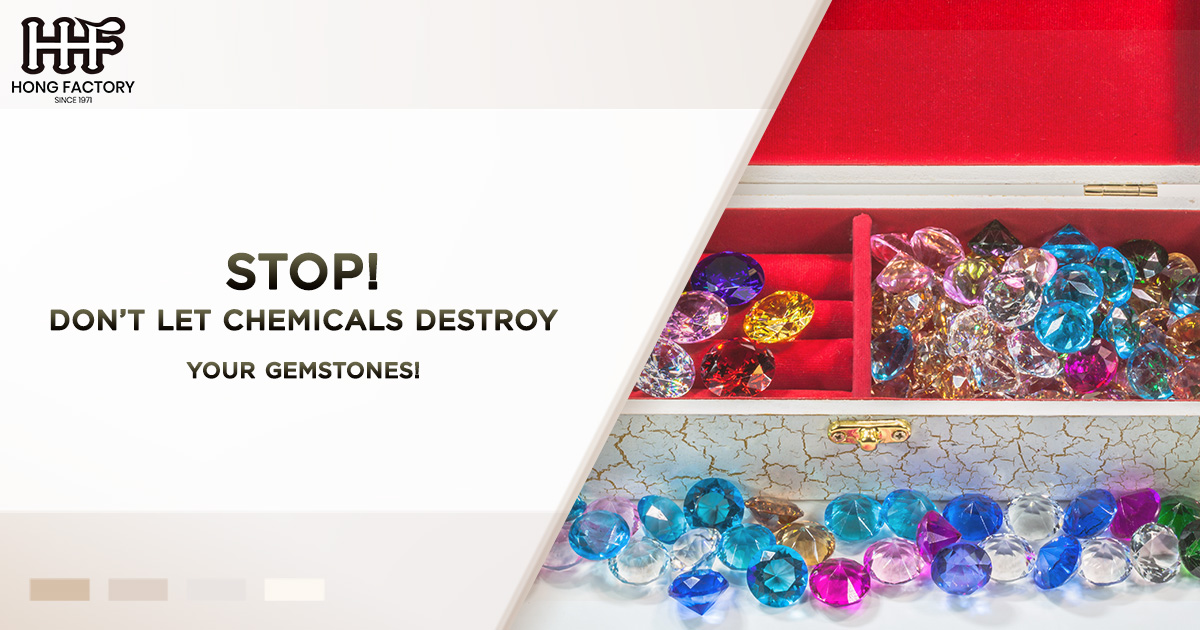
Gemstones are nature’s treasures—rare, beautiful, and dazzling in their unique brilliance. Whether you own an heirloom engagement ring, a vibrant gemstone bracelet, or a collection of precious stones, protecting your gemstones from chemical damage is crucial to maintaining their beauty and value. Unfortunately, many people unknowingly expose their gemstones to harmful substances every day, causing dulling, discoloration, or irreparable damage.
In this article, we will explore the risks of chemical damage to gemstones and, more importantly, the steps you can take for protection and prevention. With a little knowledge and care, you can ensure that your gemstones remain stunning for years to come.
Understanding Chemical Damage to Gemstones
Chemical damage occurs when gemstones come into contact with substances that alter their surface, structure, or color. While gems may seem hard and durable, they are not invincible. The chemical composition and physical properties of gemstones vary, which means some are more vulnerable to damage than others.
Certain harsh chemicals, such as cleaning agents, cosmetics, perfumes, and even acidic foods, can corrode, discolor, or weaken gemstones. For example, opals and pearls, which are softer and more porous, are particularly prone to damage from chemicals. On the other hand, harder gemstones like diamonds or sapphires may resist scratches but are still vulnerable to chemical reactions.
How Chemicals Affect Gemstones
Chemicals can harm gemstones in various ways, including :
- Discoloration : Some gemstones have vibrant hues due to the presence of trace elements. Harsh chemicals can strip these elements away, leaving gemstones dull or faded.
- Corrosion : Acidic or alkaline substances can etch or corrode the surface of softer gemstones, leading to pitting or uneven textures.
- Breakage or Weakening : Continuous exposure to chemicals can weaken a gemstone’s internal structure, increasing the risk of cracks or breakage.
- Polish or Finish Damage : Many gemstones are coated with a specialized polish to enhance their appearance. Chemicals can damage these coatings, leaving stones looking lifeless.
Common Chemicals That Pose Risks to Gemstones
To prevent chemical damage, it’s essential to recognize which substances can harm your gemstones. Here’s a list of common chemicals and products to avoid :
1. Household Cleaning Products
Harsh cleaners like bleach, ammonia, and detergents are notorious for damaging gemstones. Even natural or eco-friendly products can contain ingredients that harm delicate gems.
- Example : Chlorine in bleach can corrode metals in jewelry settings and discolor stones like amethysts and emeralds.
2. Perfumes and Cosmetics
Lotions, perfumes, and makeup often contain alcohol, acids, and oils that can react with gemstones. Over time, these chemicals can dull the gemstone’s shine or tarnish its surface.
- Tip : Always apply perfumes or cosmetics long before wearing your gemstone jewelry.
3. Acids and Alkaline Substances
Lemon juice, vinegar, and other acidic substances can dissolve or etch certain gemstones, particularly porous ones like pearls or opals. Alkaline substances, like baking soda, can also cause damage.
- Did You Know? Even accidental contact with acidic foods can harm gemstones during a meal or cooking.
4. Swimming Pool Chemicals
Chlorine in swimming pools can be extremely corrosive to both gemstones and jewelry settings. It’s best to remove all jewelry before jumping into the pool.
How to Protect Your Gemstones from Chemical Damage
Now that we understand the risks, let’s focus on solutions. Protection and prevention are key to preserving the brilliance and quality of your gemstones. Follow these expert tips to shield your gemstones from chemical damage:
1. Remove Gemstone Jewelry During Certain Activities
To avoid accidental exposure to chemicals, remove your gemstone jewelry during specific activities, including :
- Cleaning with chemical products
- Applying makeup, lotions, perfumes, or hair products
- Swimming in chlorinated pools or hot tubs
- Cooking with acidic ingredients
By removing your jewelry ahead of time, you can significantly reduce the risk of damage.
2. Store Gemstones Properly
Proper storage is essential to prevent chemical and physical damage. Use the following tips :
- Keep gemstones in a soft, padded jewelry box or individual pouches.
- Avoid storing multiple pieces together, as hard gemstones can scratch softer ones.
- Place silica gel packets in your jewelry box to reduce humidity, which can affect certain gemstones like opals.
3. Clean Gemstones Safely
Cleaning gemstones is necessary to maintain their sparkle, but it must be done with care. Avoid chemical cleaners and instead use these methods :
- Mild Soap and Warm Water Method : Mix mild soap with warm water and gently scrub the gemstone with a soft toothbrush. Rinse thoroughly and pat dry with a soft cloth.
- Microfiber Cloth : For loose dirt or fingerprints, use a clean microfiber cloth to wipe the surface.
- Professional Cleaning : For more valuable or delicate gemstones, take your jewelry to a professional jeweler for cleaning.
Note : Always check your gemstone’s specific care requirements before cleaning.
Prevention is the Best Defense
Preventing chemical damage to gemstones requires mindfulness and good habits. Here are additional strategies to ensure your gemstones stay pristine :
1. Know Your Gemstone’s Properties
Educate yourself about your gemstones’ hardness, porosity, and chemical sensitivity. For example:
- Diamonds are the hardest gemstones but can still be damaged by chlorine.
- Pearls are soft and porous, making them vulnerable to virtually all chemicals.
- Turquoise and opals are sensitive to both chemical exposure and extreme temperatures.
Being aware of your gemstones’ vulnerabilities allows you to take appropriate precautions.
2. Opt for Protective Jewelry Coatings
Some jewelers offer protective coatings for gemstones and jewelry settings. These invisible coatings can help shield gemstones from chemical exposure, scratches, and everyday wear. While not foolproof, they add an extra layer of protection.
3. Avoid DIY Solutions
Many at-home cleaning hacks, like using vinegar or baking soda, can do more harm than good. Stick to gentle, gemstone-safe cleaning methods or rely on professional services.
Mistakes to Avoid When Caring for Gemstones
Even with the best intentions, mistakes can happen. Here are some common errors to avoid when protecting your gemstones :
- Wearing Jewelry During Cleaning or Swimming : It’s easy to forget to take off your jewelry before chores or a dip in the pool, but the damage can be significant.
- Using Abrasive Cleaners or Tools : Avoid scrubbing gemstones with abrasive brushes or chemicals, as they can scratch or dull the surface.
- Neglecting Regular Inspections : Loose settings can expose gemstones to more damage. Have your jewelry inspected by a jeweler periodically to ensure the gemstones are secure.
Why Prevention Matters – Protecting Value and Sentimental Worth
The beauty of gemstones is only one aspect of their allure. Many gemstones hold significant monetary or sentimental value, making their preservation even more critical. Heirlooms passed down through generations or gifts from loved ones can never be replaced. Chemical damage not only diminishes your gemstones’ appearance but also their emotional and financial worth.
By taking proactive steps toward prevention, you’re not just protecting your jewelry you’re safeguarding memories and investments.
Final Thoughts
Your gemstones deserve the utmost care and attention. Although they may seem tough, they are not immune to the harmful effects of chemicals and improper handling. Prevention is always better than cure, and with proper storage, safe cleaning methods, and carefully avoiding chemical exposure, you can ensure your gemstones remain radiant and undamaged for generations.
The key to long-lasting gemstone brilliance lies in being mindful of everyday activities and taking simple precautions. Whether it’s removing your jewelry during chores or using gentle cleaning techniques, these small but meaningful actions can make a world of difference.
Don’t let chemical damage dull the shine of your precious gemstones. Start protecting and preventing today your gemstones will thank you with their timeless sparkle!
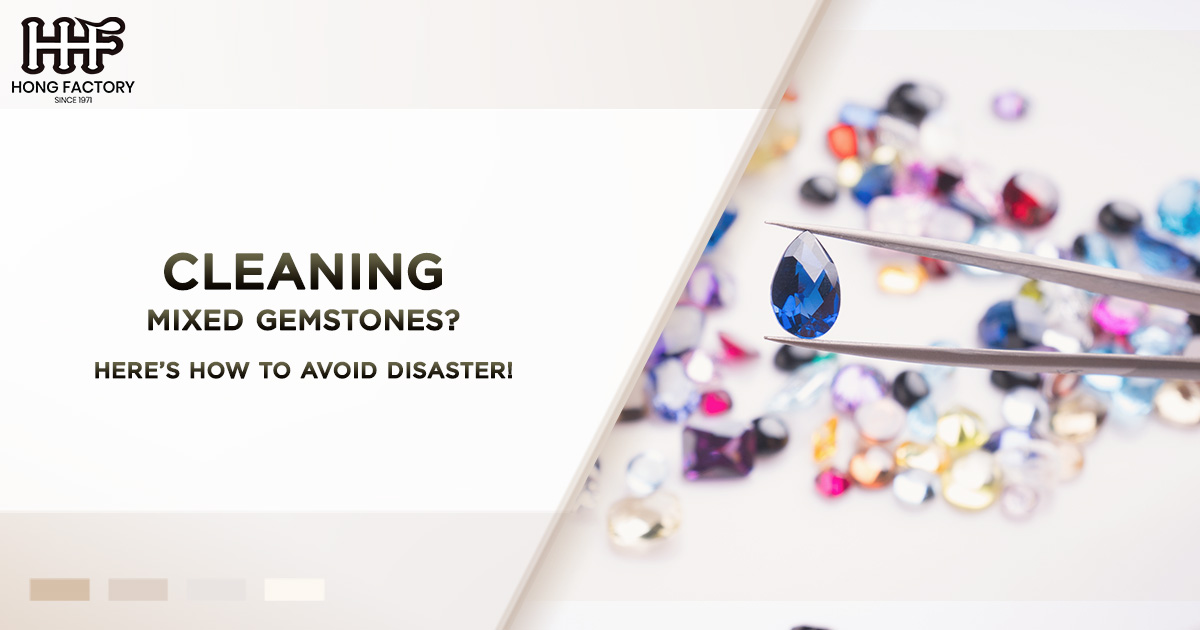
When it comes to jewelry, combination pieces featuring mixed gemstones are both stunning and versatile, but cleaning them can be tricky. Every gemstone has its unique characteristics, and improper care can lead to scratches, cracks, or even permanent damage. Whether it’s an heirloom necklace or a brand-new cocktail ring, knowing the safe methods for cleaning these pieces is essential. In this guide, we’ll walk you through the steps and precautions to ensure your mixed-gemstone jewelry remains flawless and sparkling.
Why Cleaning Mixed Gemstones Requires Special Attention
Combination pieces often feature gemstones of varying hardness, sensitivity to moisture, and chemical composition. For example, a ring with diamonds and opals or a bracelet featuring sapphires and pearls needs to be handled with different care compared to single-stone pieces. Using the wrong cleaning technique can result in :
- Scratching softer gemstones.
- Weakening adhesive settings.
- Tarnishing sensitive stones.
That’s why understanding safe methods and taking extra precautions is crucial when dealing with mixed-gemstone jewelry.
The Challenges of Cleaning Combination Pieces
Before we provide solutions, it’s essential to understand the challenges you may face while cleaning mixed gemstones :
1. Different Hardness Levels
The Mohs hardness scale measures the scratch resistance of stones. Hard gemstones like diamonds (10 on the Mohs scale) can easily scratch softer ones like turquoise (5-6) or amber (2-2.5) if they rub against each other during cleaning.
2. Sensitivity to Chemicals
Some gemstones, such as opals or emeralds, are sensitive to harsh chemicals commonly found in commercial jewelry cleaners. Using the wrong solution can cause discoloration, dullness, or etching.
3. Porous Materials
Porous stones like pearls or turquoise can absorb water or cleaning solutions, leading to discoloration or damage.
4. Different Settings
Combination pieces may feature gemstones held in place by prongs, bezel settings, or adhesives. Vigorous cleaning can loosen stones or weaken glue-based settings.
Safe Methods for Cleaning Mixed Gemstones
Cleaning your mixed-gemstone jewelry doesn’t have to be a gamble. With the proper precautions and techniques, you can maintain their beauty without causing harm.
1. Inspect the Jewelry Thoroughly
Before you clean any piece, carefully inspect it for :
- Loose gemstones.
- Weak prongs or damaged settings.
- Cracks, chips, or scratches.
If you notice any of these issues, avoid cleaning the item yourself. Take it to a professional jeweler to prevent further damage.
2. Use Lukewarm Water and Mild Soap
One of the safest and most effective methods for cleaning combination pieces is gentle handwashing with lukewarm water and mild soap.
Steps :
- Mix a small amount of mild dish soap (free of ammonia or harsh chemicals) with lukewarm water in a bowl.
- Dip a soft, lint-free cloth or an unused soft-bristled toothbrush into the soapy water.
- Gently clean each gemstone, paying extra attention to crevices and settings.
- Rinse the jewelry with clean lukewarm water.
- Pat dry with a microfiber cloth, ensuring all moisture is removed.
Precaution : Avoid soaking the jewelry, especially if it contains porous stones like pearls or turquoise.
3. Avoid Ultrasonic and Steam Cleaners
Though ultrasonic cleaners can work well for some gemstones, they are not safe for combination pieces. The vibrations and heat can crack or loosen sensitive stones. Similarly, steam cleaners can cause thermal shock to delicate gems, resulting in cracks or discoloration.
4. Buff with a Jewelry Polishing Cloth
After cleaning, use a non-abrasive jewelry polishing cloth to gently buff the gemstones. This step enhances their natural shine without causing abrasions.
5. Handle with Clean Hands
Before cleaning or handling your mixed-gemstone jewelry, make sure your hands are clean and free of oils or lotions. Contaminants can leave a residue on the stones, dulling their brilliance.
Precautions to Keep in Mind
Proper care goes beyond cleaning. By following these precautions, you can prevent unnecessary wear and tear on your beloved combination pieces :
1. Store Jewelry Separately
Mixed-gemstone jewelry should never be thrown into a drawer or jewelry box with other pieces. Stones with higher hardness levels can scratch softer ones.
Solution :
- Use soft, padded jewelry boxes with individual compartments.
- Wrap pieces in a soft cloth before storage.
2. Avoid Prolonged Exposure to Moisture
Water can damage porous gemstones, degrade adhesive settings, and tarnish metals. Always remove your jewelry :
- Before swimming or bathing.
- During household chores involving water or cleaning agents.
3. Keep Away from Chemicals
Perfumes, hairsprays, and cleaning products can harm gemstones and settings. Apply personal care products before wearing your jewelry to minimize exposure.
4. Avoid Extreme Temperatures
Sudden changes in temperature can cause thermal shock, especially in stones like opals or emeralds. Always store your jewelry in a stable, temperature-controlled environment.
5. Regular Maintenance Checks
Periodically inspect your mixed-gemstone jewelry for loose settings or worn metal. Early detection can prevent costly repairs or loss of stones down the line.
Specialized Techniques for Delicate Gemstones
Some combination pieces may include especially delicate gemstones that require extra care. Here’s how to handle a few common types :
1. Opals and Pearls
Opals and pearls are among the most delicate gemstones, requiring gentle cleaning methods:
- Use a damp, soft cloth to wipe the stones.
- Avoid soaps or cleaners, as chemicals can damage their surface.
2. Emeralds
Emeralds often contain inclusions and are treated with oils to enhance their appearance.
- Clean with a soft cloth or warm, soapy water.
- Avoid steam or ultrasonic cleaners.
3. Turquoise and Amber
These porous stones can absorb liquids :
- Use a dry, soft cloth for cleaning.
- Avoid soaking or using abrasive materials.
Common Mistakes to Avoid
Even with the best intentions, people often make mistakes when cleaning their combination pieces. Avoid these pitfalls :
- Using Abrasive Materials : Scrub brushes or rough cloths can scratch gemstones.
- Soaking for Too Long : Even sturdy gems can weaken if submerged for extended periods.
- Skipping a Rinse : Leftover soap residue can dull the gemstones’ sparkle.
- Assuming One Method Fits All : What works for diamonds may not work for opals or pearls.
When to Seek Professional Cleaning
If your jewelry is particularly valuable or features a large number of mixed gemstones, it may be safer to take it to a professional jeweler for cleaning. Jewelers have specialized equipment and knowledge to clean combination pieces without causing damage.
Final Thoughts
Cleaning mixed-gemstone jewelry requires caution, patience, and attention to detail. By using safe methods, taking proper precautions, and avoiding common mistakes, you can keep your combination pieces looking as brilliant as the day you got them.
Remember, your jewelry is an investment in beauty and craftsmanship. Treat it with the care it deserves, and you’ll enjoy its sparkle for years to come.
Don’t take risks when it comes to cleaning your precious mixed-gemstone treasures—follow these expert tips and avoid disaster!
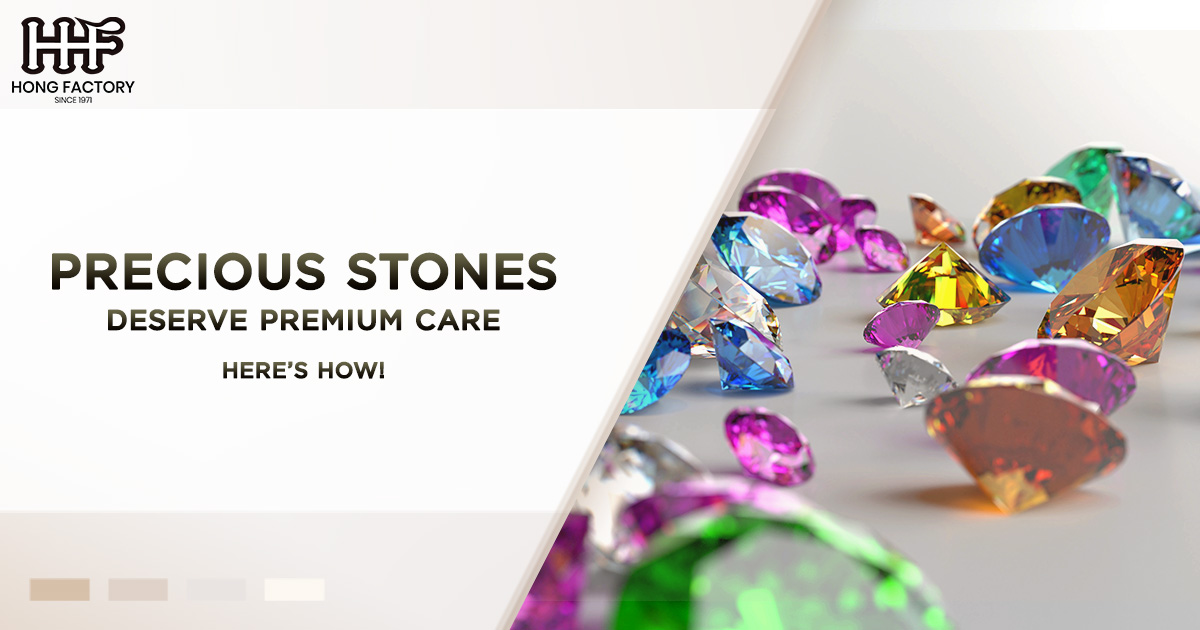
Owning precious stones like diamonds, rubies, and sapphires is a privilege that often comes with significant sentimental and monetary value. Whether it’s a family heirloom, an engagement ring, or a symbol of personal achievement, these gemstones deserve premium care to retain their brilliance, longevity, and value. Improper maintenance can dull their beauty, overshadowing their radiant charm. In this guide, we’ll explore essential tips and best practices for diamond care, ruby maintenance, and sapphire cleaning, ensuring that your gemstones remain as breathtaking as the day you acquired them.
Understanding the Value of Proper Gemstone Care
Precious stones are not only prized for their beauty but also their durability. Diamonds, for instance, are famed for being the hardest natural material on earth. Rubies and sapphires follow closely behind in hardness, making all three stones exceptionally resilient. However, this durability doesn’t make them invincible. Daily wear, environmental exposure, improper storage, and neglect can take a toll on their brilliance over time.
Here’s why the right care is crucial :
- Longevity : Proper maintenance prevents damage and ensures your gemstones last a lifetime or longer.
- Sparkle : Regular cleaning enhances their brilliance, allowing them to shine as they were meant to.
- Value Retention : Well-maintained stones retain their monetary and sentimental value over years of ownership.
Let’s explore specific steps to care for diamonds, rubies, and sapphires.
Diamond Care: Keeping Your Brilliant Gem Flawless
Diamonds are incredibly durable, scoring a perfect 10 on the Mohs hardness scale, but they’re not indestructible. They can collect grime, oils, and dust over time, dulling their sparkle. Here’s how to properly care for your diamonds :
1. Clean Your Diamond Regularly
Cleaning your diamond is essential to maintain its brilliance, especially if you wear it daily. Oils from your skin or lotions can accumulate on the surface, giving it a cloudy look.
- At-Home Cleaning : Mix warm water with a few drops of mild dish soap. Soak your diamond jewelry for 15–20 minutes, then gently scrub it with a soft-bristle toothbrush. Rinse under running water and pat dry with a lint-free cloth.
- Avoid harsh chemicals like bleach or abrasive scrubbers as they can harm the setting or metal around the stone.
2. Protect Your Diamond from Chipping
While diamonds are extremely hard, they can chip if struck at the wrong angle.
- Safe Storage : Store diamond pieces individually in a soft pouch or jewelry box to avoid scratches from other gems.
- Remove Before Activities : Take off diamond jewelry before doing activities like heavy lifting, gardening, or swimming.
3. Professional Cleaning and Inspections
Get your diamond jewelry professionally cleaned and inspected at least once a year. Jewelers can detect loose settings or potential damage that might go unnoticed.
Ruby Maintenance – Preserving Their Fiery Red Glow
Rubies are highly prized for their deep red hue and durability. Scoring a 9 on the Mohs scale, they are second only to diamonds in hardness. However, rubies can still lose their luster without proper care. Follow these tips to maintain your ruby’s vibrant glow.
1. Use Gentle Cleaning Techniques
Ruby cleaning requires a careful approach to protect both the stone and its setting.
- Warm Water and Soap : Mix warm water with gentle soap and soak your ruby jewelry for 5–10 minutes. Use a soft toothbrush to clean around the stone, rinse thoroughly, and dry with a soft cloth.
- Avoid harsh chemicals and ultrasonic cleaners, especially for rubies with fractures or inclusions filled with glass, as they can weaken the stone.
2. Prevent Scratches
Although rubies are hard, they can still be scratched by other gems or harder materials like diamonds.
- Store rubies separately in a padded jewelry box or soft pouch.
- Avoid wearing them while engaging in strenuous activities where contact with other surfaces might occur.
3. Protect Ruby Treatments
Some rubies undergo heat treatments or fracture filling to enhance their color and clarity. While these treatments are stable, they can be compromised by exposure to high heat, chemicals, or ultrasonic cleaners. Always consult with a jeweler before attempting to clean treated rubies.
Sapphire Cleaning – Maintaining Their Royal Blue Elegance
Sapphires, often associated with loyalty and wisdom, are stunning and sturdy gemstones. Like rubies, they rank 9 on the Mohs scale, making them a durable option for daily wear. However, sapphires whether blue, pink, or yellow require consistent care to preserve their brilliance.
1. Gentle and Safe Cleaning Methods
Proper sapphire cleaning will keep the stone shining like new.
- DIY Cleaning : Soak your sapphire jewelry in warm water mixed with mild soap for 15 minutes. Use a soft toothbrush to clean the stone gently, rinse thoroughly, and dry with a lint-free cloth.
- Avoid Harsh Chemicals : Chlorine and household cleaners can damage the stone’s brilliance and weaken its setting.
2. Pay Attention to Settings
Sapphires are often set in intricate metalwork, so dirt and oils can accumulate in crevices. A soft-bristle brush is your best friend for reaching these tiny areas.
3. Protect Against Hard Impacts
While sapphires are tough, a sharp blow can still damage them or loosen their setting.
- Remove your sapphire jewelry during activities like sports, cleaning, or gardening to avoid accidental impacts.
- Regularly inspect your sapphire jewelry to check for loose stones or damage.
General Tips for Precious Gemstone Care
While diamonds, rubies, and sapphires have their specific care requirements, there are universal practices that apply to all precious stones.
1. Take Off Jewelry During Certain Activities
- Remove your jewelry before swimming, exercising, or using cleaning products to prevent exposure to harsh chemicals and potential damage.
- Avoid wearing gemstone jewelry when applying lotions, perfumes, or hair products, as these can leave residue on the stones.
2. Invest in Proper Storage
- Use a jewelry box with separate compartments to prevent stones from scratching each other.
- Wrap individual pieces in a soft cloth or pouch for added protection.
3. Avoid Heat and Sudden Temperature Changes
- Precious stones can crack or weaken from thermal shock, so avoid leaving them near heat sources or in direct sunlight for extended periods.
- Never wear gemstone jewelry in saunas or hot tubs.
4. Insure Your Precious Stones
Given their value, insuring your diamonds, rubies, and sapphires is a smart investment. This protects you financially in case of loss, theft, or damage.
When to Seek Professional Help
While at-home care can work wonders, there are times when professional help is essential.
- Annual Check-Ups : Visit a jeweler once a year for a professional inspection and cleaning. Jewelers can identify loose stones, worn prongs, or other issues that may compromise the safety of your jewelry.
- Complex Settings : Intricate or vintage settings often require specialized cleaning techniques to preserve their craftsmanship.
- Severely Dull Stones : If your gemstone appears lackluster despite regular cleaning, a jeweler may use advanced techniques to restore its brilliance.
Conclusion
Your precious stones—diamonds, rubies, and sapphires—are more than just exquisite adornments; they represent timeless beauty, cherished memories, and significant investments. By following proper care routines for diamond care, ruby maintenance, and sapphire cleaning, you ensure that these treasures retain their brilliance and charm for years to come.
Remember, gentle cleaning, safe storage, and regular professional check-ups are the cornerstones of gemstone preservation. With a little effort and attention, your precious stones will continue to dazzle and captivate, just as they were meant to. So treat them with the premium care they deserve—they’re worth it!
By following these care tips, your diamonds, rubies, and sapphires will always shine brightly, reflecting not just their natural allure but also the thoughtful care you’ve invested in them.
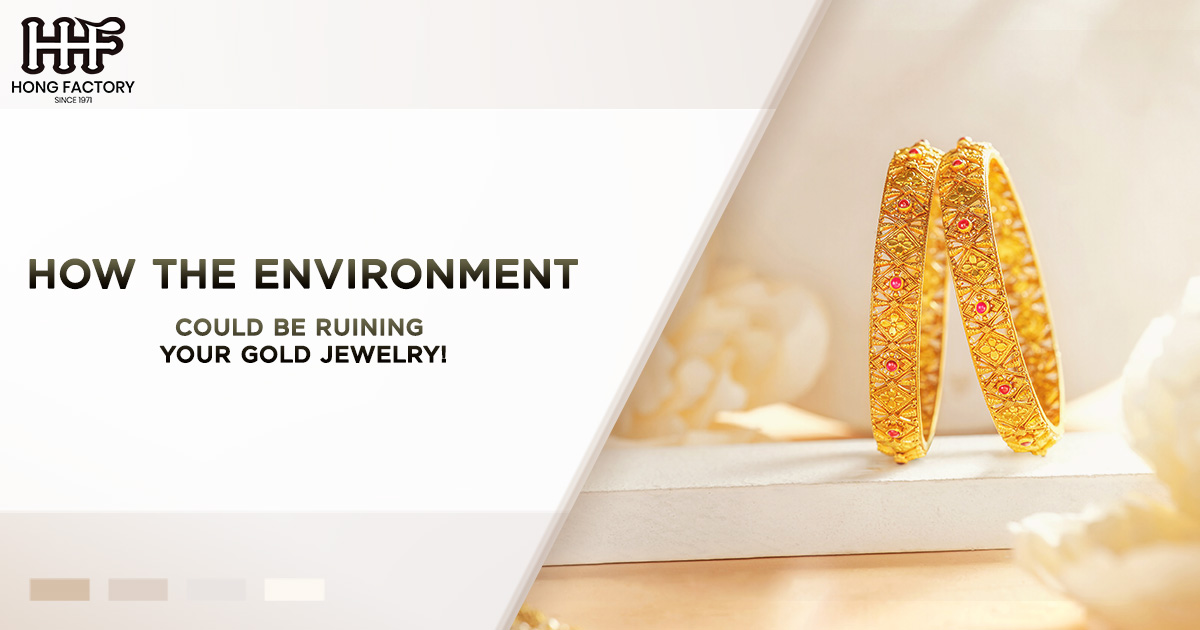
Gold jewelry has long been treasured for its beauty, value, and durability. Its timeless appeal makes it a preferred choice for many, whether it’s a delicate necklace, a pair of elegant earrings, or a family heirloom ring. While gold is known for its resistance to tarnish and corrosion, it is not entirely immune to environmental factors. Chemicals, temperature, and humidity—three seemingly innocuous elements—can have a profound impact on the longevity and appearance of your gold jewelry.
In this article, we will dive into the surprising ways the environment can degrade or alter your gold jewelry and how you can protect these precious pieces from harm.
Understanding the Composition of Gold Jewelry
Before discussing environmental impacts, it’s essential to understand the composition of gold jewelry. Pure gold (24 karat) is soft and malleable, making it impractical for crafting durable jewelry pieces. To strengthen it, gold is often alloyed with other metals such as copper, silver, or nickel. These alloying metals give gold its preferred hardness and sometimes its color variations, such as rose gold or white gold.
However, these added metals make gold jewelry susceptible to environmental influences. While pure gold is chemically inert, the alloys can react with external factors like chemicals, fluctuating temperature, or elevated humidity, causing changes in the jewelry’s appearance or structural integrity.
Environmental Impacts on Gold Jewelry
Gold jewelry may look indestructible, but prolonged exposure to certain environmental conditions can cause damage, dullness, or discoloration. Let’s explore the most common environmental threats to gold jewelry.
1. Chemicals : A Hidden Threat to Gold’s Shine
Chemical exposure is one of the biggest culprits when it comes to damaging gold jewelry. While pure gold doesn’t typically react to chemicals, the alloyed metals in your gold jewelry can be highly vulnerable. Everyday products and chemicals can cause significant harm, including
- Household Cleaners : Cleaning agents, detergents, and bleach contain harsh chemicals that can corrode or discolor gold jewelry over time. For instance, chlorine is known to weaken metal alloys in gold, potentially causing cracks or breakage with repeated exposure.
- Cosmetics and Perfumes : Lotions, makeup, hairspray, and perfumes may leave residues on your gold jewelry. The chemicals in these products—such as alcohol or acids—can strip away the protective coating or dull the surface, leaving your jewelry looking worn.
- Swimming Pools and Hot Tubs : Both contain chlorine, which accelerates chemical reactions with gold alloys, particularly in hot water. Long-term exposure can alter your jewelry’s structure and surface.
- Acidic Substances : Contact with acidic foods or spills (like citrus juice or vinegar) can also tarnish gold jewelry, especially if left uncleaned.
How to Protect Your Gold from Chemicals
- Remove jewelry before cleaning, swimming, or applying substances like perfume or lotion.
- Rinse your jewelry with lukewarm water and gently clean it with a soft cloth after exposure to potentially harmful chemicals.
2. Temperature Extremes: Structural Risks to Gold
Another significant environmental factor that could be affecting your gold jewelry is temperature. Sudden temperature changes or prolonged exposure to extreme conditions can damage your gold in several ways
- Thermal Expansion and Contraction: Gold is a malleable metal, and repeated exposure to very high or low temperatures can lead to slight expansion or contraction. Over time, this can weaken the integrity of settings, clasps, or tiny prongs that hold gemstones securely in place.
- Melting Point Considerations: While gold’s melting point is high (around 1,064°C or 1,947°F), alloyed metals in your jewelry may have lower melting points. This makes them more susceptible to warping or minor alterations during exposure to extreme heat—for example, from open flames or industrial machinery.
- Heat Tarnishing: At high temperatures, alloy metals like copper may oxidize, resulting in tarnishing or discoloration of your gold jewelry.
How to Protect Your Gold from Temperature Changes
- Avoid wearing gold jewelry while cooking over open flames or working near high-temperature machinery.
- Store your jewelry in temperature-controlled environments to prevent extreme hot or cold exposure.
3. Humidity: The Silent Saboteur of Shine
While gold’s non-corrosive nature makes it remarkably durable, high humidity levels pose hidden dangers to your gold jewelry. Here’s how
- Moisture and Oxidation: Humidity introduces moisture into the air, which can interact with alloy metals in your gold jewelry. Over time, this can lead to tarnish or corrosion, especially in pieces with silver or copper alloys.
- Sweat and Natural Oils: High humidity often results in increased perspiration. Sweat contains salts and oils, which can leave residues on your gold jewelry, diminishing its shine and accelerating wear on alloy metals.
- Fungal Growth: In cases of prolonged humidity, gold jewelry stored in damp areas can even develop fungal growth on intricate detailing or within clasps and chains.
How to Protect Your Gold from Humidity
- Store your jewelry in airtight containers with anti-tarnish strips or silica gel packets to reduce moisture buildup.
- Avoid wearing gold jewelry in areas with excessive humidity, such as saunas or tropical climates.
- Dry your gold jewelry thoroughly if it gets wet, and clean it regularly to remove buildup.
Practical Tips for Preserving Your Gold Jewelry
Taking preemptive measures can significantly extend the lifespan and brilliance of your gold jewelry. Here are essential tips to keep your gold jewelry safe from environmental damage
- Proper Storage : Always store your gold jewelry in a clean, dry place. Use jewelry boxes with soft linings or individual pouches to prevent scratches and exposure to air or humidity.
- Regular Cleaning : Gently clean your gold jewelry with warm water, mild soap, and a soft brush. Avoid abrasive cleaners or brushes that might scratch the surface.
- Professional Inspection : Regularly take your gold jewelry to a jeweler for inspection. They can check for damaged clasps, loosened prongs, or tarnishing that might have gone unnoticed.
- Mindful Wearing : Be conscious of where and when you wear your jewelry. Remove it during activities like swimming, exercising, or gardening, where it’s likely to come into contact with chemicals or sweat.
- Avoid Prolonged Environmental Exposure : Prolonged exposure to direct sunlight, dusty environments, or extreme weather should be avoided when wearing gold jewelry.
Conclusion
Gold jewelry may seem impervious to wear and tear, but environmental factors like chemicals, temperature, and humidity can take a toll over time. Understanding these risks and taking simple precautions can help you preserve your gold’s sparkle, structural integrity, and value for years to come.
By being mindful of what your gold jewelry is exposed to, regularly cleaning it, and storing it properly, you not only maintain its brilliance but also honor the sentimental and financial investment that makes gold jewelry so special. So take measures today to protect your precious pieces and ensure they remain as dazzling as the day you bought them!
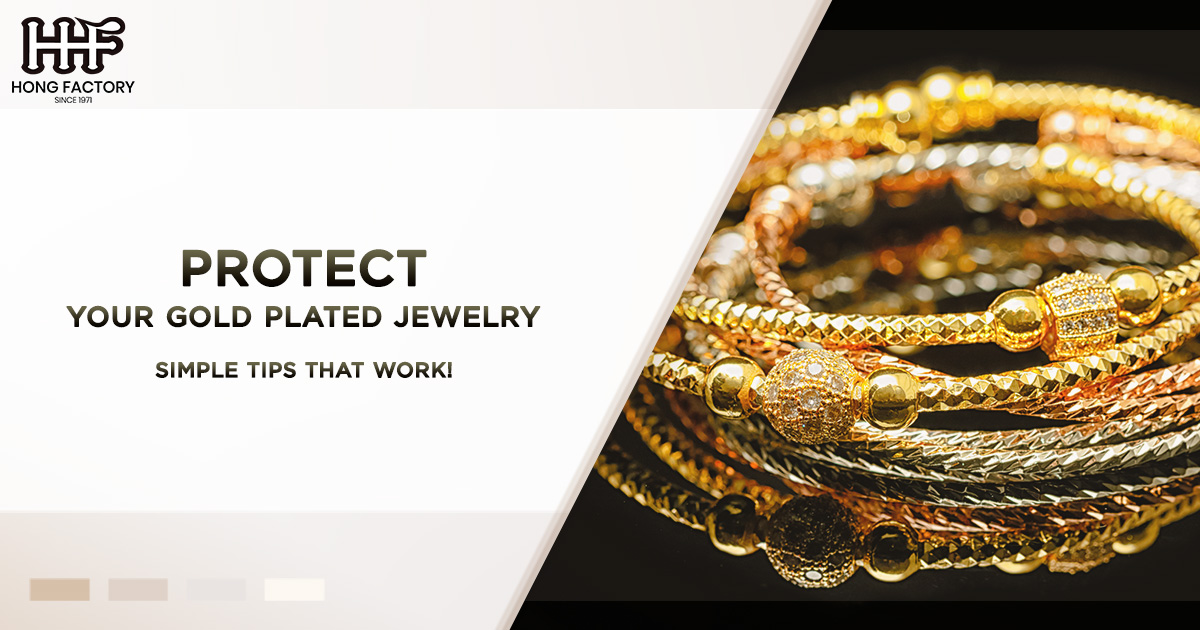
Gold-plated jewelry is a stunning and affordable way to enjoy the look of gold without the hefty price tag. However, maintaining its beauty requires care and attention. With proper plating care and maintenance, you can preserve its shine and ensure its longevity. In this guide, we’ll walk you through simple yet effective tips to keep your gold-plated pieces looking radiant for years to come. Let’s dive in!
Understanding Gold-Plated Jewelry
Before we delve into the specifics of maintenance, it’s important to understand what gold-plated jewelry actually is. Gold plating involves applying a thin layer of gold to another metal (usually copper, brass, or silver). While the gold layer gives the jewelry its desirable luster, its thinness also makes it more susceptible to wear and tear compared to solid gold.
Due to this sensitivity, plating care is essential. Without it, the gold layer can tarnish, fade, or lose its brilliance. The following tips will help you maintain your jewelry’s look while maximizing its lifespan.
Why Gold-Plated Jewelry Needs Extra Care
Gold plating is beautiful, but its thin layer of gold can wear off over time, especially when exposed to friction, moisture, and chemical substances. With proper maintenance, you can minimize wear and protect the gold layer from damage. Whether you’re wearing your favorite gold-plated necklace, bracelet, or earrings, these tips will help ensure its longevity.
Essential Tips for Maintaining Gold-Plated Jewelry
1. Avoid Contact with Water and Sweat
Water, especially when mixed with soap, chlorine, or salt, can dull your gold plating over time. Similarly, sweat can contain oils and salts that contribute to tarnishing. To protect your jewelry:
- Remove gold-plated items before swimming, showering, or exercising.
- Avoid wearing them in hot, humid environments, such as saunas or gyms.
2. Steer Clear of Harsh Chemicals
Chemical exposure is one of the main culprits of damage to gold plating. Everyday substances like perfume, lotion, hairspray, and cleaning products can strip away the gold coating. To avoid this:
- Apply perfumes, lotions, and other cosmetics before putting on your jewelry.
- Store gold-plated jewelry away from strong-smelling or chemical products.
3. Clean Your Jewelry Gently
Gold plating can be sensitive to abrasive cleaning methods, so it’s important to handle it with care when cleaning. Here’s a simple cleaning routine
- Mix a few drops of mild dish soap with warm water.
- Soak your jewelry for a few minutes (avoid soaking for too long).
- Gently wipe it using a soft, lint-free cloth or a cotton swab.
- Rinse with clean water and pat dry with another soft cloth.
Tip : Avoid using harsh brushes, toothpaste, or any abrasive material.
4. Remove Jewelry During Activities
Daily activities such as cleaning, gardening, or cooking can expose your jewelry to dirt, oils, and physical impact. Follow these precautions
- Take off your gold-plated jewelry before working with your hands.
- Avoid wearing rings, bracelets, or necklaces during strenuous tasks.
5. Store Jewelry Properly
Proper storage plays a key role in safeguarding the longevity of gold-plated jewelry. Follow these storage guidelines
- Store each piece in an individual soft pouch or jewelry box to prevent scratching.
- Avoid storing gold-plated jewelry in direct sunlight, high humidity, or damp conditions.
- Use anti-tarnish strips in your jewelry box for added protection.
6. Limit Wearing Time
While it’s tempting to wear your favorite gold-plated jewelry all the time, constant use can increase its exposure to wear and tear. Practice rotating your jewelry for a longer lifespan
- Reserve gold-plated pieces for special occasions.
- Alternate between different items rather than wearing the same piece daily.
7. Get Jewelry Replated When Needed
Even with the best plating care, the thin layer of gold can wear off over years of use. The good news is that gold-plated jewelry can be replated to restore its original shine. Visit a professional jeweler to have your pieces professionally cleaned and replated when you notice significant fading.
Do’s and Don’ts of Gold-Plated Jewelry Care
To summarize, here are quick reference tips to follow
Do
- Handle your gold-plated jewelry gently to avoid damage.
- Use a soft cloth for cleaning and drying.
- Store each piece separately in anti-tarnish pouches.
- Remove your jewelry before swimming, showering, or exercising.
Don’t
- Expose jewelry to harsh chemicals, such as cleaning agents or perfumes.
- Use abrasive tools like brushes or scouring pads when cleaning.
- Wear gold-plated items during heavy physical activities.
- Toss jewelry together in a drawer or box, as this can cause scratches.
Why Proper Plating Care Matters
Taking good care of your gold-plated jewelry is about more than maintaining its aesthetic appeal—it’s also about extending its longevity and getting the most value out of your pieces. With proper care, you can enjoy the beauty of your jewelry and reduce the need for frequent repairs or replacements.
Additionally, gold-plated jewelry carries sentimental and personal value for many people. Regular maintenance helps preserve the memories tied to each piece, whether it’s a gift from a loved one or a cherished keepsake.
Bonus Tips for Long-Lasting Shine
- Invest in quality gold-plated jewelry : The better the initial quality of plating, the longer it’s likely to last. Look for reputable brands and avoid extremely cheap options that may have ultra-thin plating.
- Inspect your jewelry regularly : Check for signs of tarnishing, fading, or wear, and address these issues promptly.
- Consider protective coatings : Some jewelers apply additional clear coatings to plated items to add an extra layer of protection.
Conclusion
Gold-plated jewelry is a versatile and affordable way to enjoy the glamour of gold, but it requires special care to maintain its beauty. By following these simple plating care and maintenance tips, you’ll not only extend the jewelry’s longevity but also keep its shine intact.
Remember, proper care involves avoiding water and chemicals, cleaning gently, storing wisely, and using your pieces thoughtfully. If you do notice wear, consider professional replating to return your favorite items to their original brilliance.
With these guidelines, your gold-plated jewelry will continue to add elegance to your outfits for years to come! Take care of your pieces, and they’ll take care of your style.
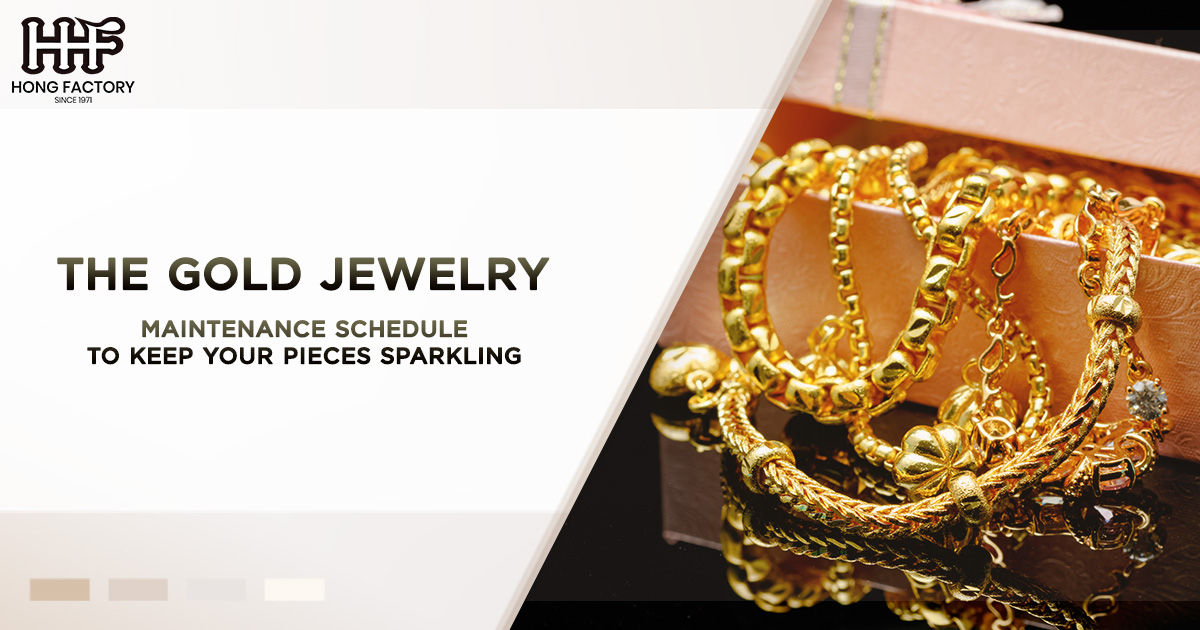
Gold jewelry, with its timeless elegance and enduring value, holds a special place in our lives. From heirloom treasures passed down through generations to modern pieces signifying personal milestones, gold jewelry deserves the utmost care to retain its beauty and shine. Proper maintenance ensures your cherished pieces stay radiant and intact for years to come.
In this article, we’ll discuss essential tips for gold jewelry care, deep cleaning methods, and why regular inspection are vital to maintaining your precious collection. Let’s delve into the steps you can take to keep your gold jewelry sparkling like new!
Why Gold Jewelry Requires Proper Maintenance
Gold may be one of the most durable and non-corrosive metals, but it is not invincible. Everyday exposure to dirt, oils, lotions, cosmetics, and environmental pollutants can accumulate on the surface of gold, dulling its luster over time. Additionally, accidental impacts or improper storage can lead to scratches, dents, or even loosen settings in pieces with gemstones.
A lack of care can lead to significant wear and tear, diminishing the beauty of your jewelry and potentially compromising its structural integrity. To keep your gold jewelry in pristine condition, regular care, deep cleaning, and periodic inspection should be part of your routine.
Regular Care – The Foundation of Gold Jewelry Maintenance
Incorporating simple, consistent care practices into your daily and weekly routine can go a long way in preserving the brilliance of your gold jewelry. Think of regular care as the preventative measure that minimizes wear and tear and slows down the accumulation of dirt.
1. Daily Habits to Protect Your Gold Jewelry
- Remove Jewelry During Certain Activities : Take off your gold jewelry when doing household chores, exercising, swimming, or showering. Chemicals in cleaning products, sweat, and chlorinated water can tarnish your pieces or cause discoloration.
- Avoid Harsh Substances : Keep gold jewelry away from perfumes, hairsprays, and lotions, as these products can leave residue or damage the finish.
- Store Properly : Always store your gold jewelry in a clean, dry, and separate storage space, such as a fabric-lined jewelry box or individual pouches. Gold is a soft metal, so storing pieces together can lead to scratches and dents.
2. Gentle Weekly Cleaning
To maintain the day-to-day shine of your gold jewelry, gentle cleaning at home is a simple and effective practice
- Fill a bowl with warm water and add a few drops of mild dish soap.
- Soak your gold jewelry for 15–20 minutes to loosen dirt and debris.
- Use a soft-bristled toothbrush to gently scrub away dirt, especially in corners or intricate designs.
- Rinse thoroughly with lukewarm water to remove any soap residue.
- Pat dry with a soft, lint-free cloth and let the pieces air dry completely before wearing or storing them.
Regular care keeps your gold jewelry looking radiant while preventing the buildup of grime that may require more intensive cleaning later.
Deep Cleaning for a Brighter Sparkle
Over time, even with regular care, gold jewelry may lose its luster due to microscopic dirt particles, oxidation, or contact with environmental pollutants. When this happens, a deeper cleaning is necessary to restore its brilliance. While professional cleaning is always an option, you can also do it yourself using safe and effective techniques.
DIY Deep Cleaning at Home
For gold jewelry that has dulled over time, here’s a step-by-step deep cleaning process
- Prepare a Cleaning Solution : Mix warm water with a small amount of ammonia or baking soda for added cleaning power. Avoid using overly harsh or abrasive household cleaners, as these can damage the gold.
- Soak and Scrub : Let your jewelry soak in the solution for about 10–15 minutes. Using a soft toothbrush or a jewelry cleaning brush, gently scrub away dirt and buildup. Pay extra attention to intricate designs or gemstone settings.
- Buff and Shine : After rinsing thoroughly with water, use a jewelry polishing cloth designed for gold to restore its shine. Buff gently in a circular motion to avoid scratches.
Professional Cleaning Services
If your jewelry is heavily tarnished, encrusted with dirt, or has delicate features that require expert handling, it’s worth seeking professional cleaning services. Jewelers use ultrasonic cleaners and steam cleaning machines to safely and effectively restore your gold jewelry’s luster. Professional cleaning is also recommended for pieces with intricate details or multiple gemstones, which may require special care.
Periodic Inspection – Keeping Your Jewelry Safe
Regular inspections are as important as cleaning when it comes to maintaining the longevity of your gold jewelry. Inspections help identify potential issues such as loose gemstones, worn prongs, or weakened clasps before they lead to more significant damage.
Why Inspections Are Important
- Detect Loose Stones: Over time, the prongs or settings holding gemstones in place may loosen, increasing the risk of losing them. Inspections can help ensure the security of your stones.
- Identify Structural Issues: Gold is a soft metal, and constant wear can lead to thinning of chains, bending of rings, or damage to clasps. Early detection of these issues can prevent costly repairs down the line.
- Preserve Sentimental Value: Inspections protect the sentimental and financial value of your jewelry, especially for heirloom or custom-designed pieces.
How to Inspect Gold Jewelry
While a professional jeweler should perform a thorough inspection at least once a year, you can carry out basic checks at home
- Examine gemstones for any movement or looseness.
- Look for visible cracks, scratches, or distortions in the metal.
- Test clasps, hinges, and other mechanical components to ensure they are working properly.
If you notice any issues during your inspection, take the piece to a jeweler for repairs as soon as possible.
Additional Tips for Gold Jewelry Care
To further protect and maintain your gold jewelry’s sparkle, keep these tips in mind
- Rotate Your Jewelry : If you wear gold jewelry daily, consider rotating between different pieces. This helps minimize wear on individual items and prolongs their life.
- Be Mindful with Mixed Metals : If your gold jewelry is combined with other materials, such as platinum, silver, or gemstones, each component may require different cleaning and care techniques.
- Invest in Quality Cleaning Products : Use cleaning products specifically designed for gold jewelry to ensure safe and effective results.
- Protect Against Tarnish : Although pure gold doesn’t tarnish, lower-karat gold alloys with other metals may. Store these pieces with anti-tarnish strips to reduce oxidation.
Conclusion
Gold jewelry is an investment not only in financial terms but also in its sentimental and aesthetic value. Maintaining its beauty requires regular care, occasional deep cleaning, and periodic inspection to ensure it remains as dazzling as the day you got it. By incorporating these practices into your routine, you’ll safeguard your cherished gold jewelry for generations to come.
Whether you’re cleaning at home or entrusting your pieces to a jeweler, treating your gold jewelry with the respect it deserves will keep it sparkling and radiant, ready to make a statement on any special occasion.
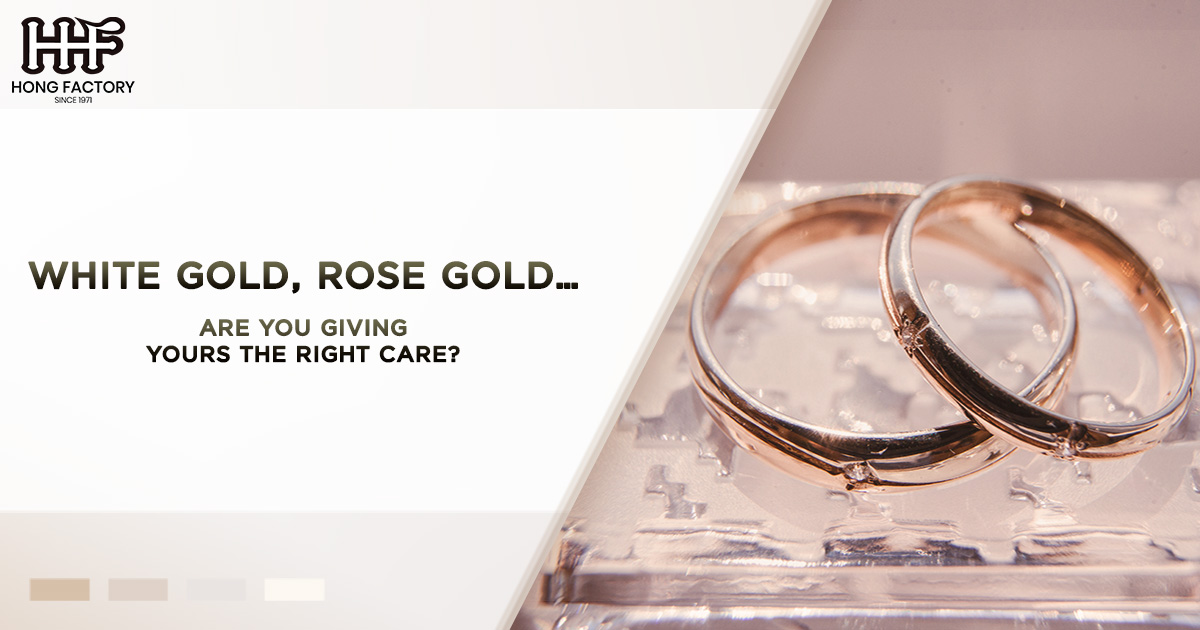
Gold jewelry is more than just a fashion statement; it’s an investment, a sentimental keepsake, and sometimes even a family legacy. Whether you love the soft blush of rose gold, the classic brilliance of white gold, or the timeless glow of yellow gold, each type of gold carries its unique charm—and requires specific care. To maintain its beauty and value, you’ll need to know the right maintenance tips, cleaning methods, and precautions. Let’s explore how to care for white gold, rose gold, and other types of gold so they last a lifetime.
Understanding Gold Types and Their Composition
Before diving into care and maintenance, it’s essential to understand why different types of gold require specific care. Pure gold (24 karats) is soft and malleable, which makes it unsuitable for most jewelry. To enhance its durability, pure gold is alloyed with other metals, resulting in varying shades like white gold, rose gold, and yellow gold. The addition of metals like silver, copper, nickel, or palladium not only influences color but also affects the care and cleaning needs of the jewelry.
Here’s a quick snapshot
- White Gold : A mix of gold and white metals like nickel or palladium, often coated with rhodium for extra brightness.
- Rose Gold : Blended with copper to achieve a warm, pink hue.
- Yellow Gold : A classic alloy of gold mixed with silver and copper for strength.
The Specific Care Needs of White Gold
White gold is a sophisticated, silvery alloy that owes its luster to a rhodium coating. Over time, this rhodium layer can wear off, exposing the underlying gold, which may appear yellowish. Due to this, white gold requires specific care to maintain its shine and prevent damage.
Maintenance Tips for White Gold
- Regular Rhodium Plating : To keep your white gold jewelry looking brilliant, it’s recommended to have it re-plated with rhodium every 1-2 years. This process restores its brightness and prevents wear.
- Avoid Harsh Chemicals : Chlorine, bleach, and other harsh chemicals can corrode white gold. Always remove your jewelry before swimming in pools or using cleaning products.
- Store Carefully : To avoid scratches, store white gold pieces separately in soft pouches or a lined jewelry box.
Cleaning Methods for White Gold
- Gentle Soak : Mix a few drops of mild dish soap with warm water, let your jewelry soak for 15-20 minutes, and gently scrub with a soft-bristle toothbrush.
- Polishing Cloth : Use a jewelry polishing cloth designed for white gold to enhance its shine.
- Professional Cleaning : For stubborn stains or dullness, take your white gold jewelry to a professional jeweler for ultrasonic cleaning.
Rose Gold : Tips for Preserving Its Romantic Hue
Rose gold has gained immense popularity in recent years due to its romantic, blush-pink tone. Its copper content makes it more durable than yellow or white gold, yet it is still prone to tarnishing or developing a patina over time. Proper care will help retain its beauty.
Maintenance Tips for Rose Gold
- Prevent Tarnishing: Copper in rose gold can darken or tarnish when exposed to moisture or air. Keep your rose gold jewelry dry and clean to extend its life.
- Avoid Abrasives: Scrubbing too hard or using abrasive cleaning tools can scratch the surface of rose gold.
- Handle with Care: Rose gold is less susceptible to bending due to its copper content; however, it’s still important to avoid rough handling.
Cleaning Methods for Rose Gold
- Warm Water and Soap: As with white gold, you can clean rose gold by soaking it in lukewarm water mixed with mild soap. Gently brush with a soft cloth or brush.
- DIY Polishing Solutions: For shine restoration, use a small amount of baking soda mixed with water to form a paste. Apply with a soft cloth, then rinse thoroughly.
- Professional Check-Ups: Rose gold can lose its warm hue if improperly cleaned. Regular professional inspections will ensure its beauty remains intact.
Yellow Gold : Keeping It Classic
Yellow gold is the most traditional type of gold and, thanks to its natural hue, requires less maintenance than its white or rose counterparts. However, it is still important to clean and store it properly to prevent scratches or dullness.
Maintenance Tips for Yellow Gold
- Protect Against Scratches : Yellow gold is softer than rose gold, making it more prone to scratches. Avoid wearing it while doing manual labor or working with hard materials.
- Polish Regularly : Use a cleaning cloth to polish yellow gold and maintain its glossy finish.
- Store in a Safe Place : Keep yellow gold jewelry in individual compartments to prevent tangling or scratching.
Cleaning Methods for Yellow Gold
- Simple Soap Solution : Soak yellow gold in warm water with a splash of mild soap for a quick clean. Rinse and dry with a lint-free cloth.
- Ammonia Solution (Occasionally) : For deep cleaning, mix one part ammonia with six parts water. Dip your jewelry briefly and rinse thoroughly (use this method sparingly to avoid damaging the gold).
- Buffing with a Soft Cloth : Regular buffing with a soft cloth will keep yellow gold shining brightly.
General Gold Jewelry Care Tips
Regardless of the type of gold, there are general care practices that will help you preserve your treasured pieces for years to come. Here are some golden rules to follow
Everyday Tips
- Remove Jewelry During Activities : Take off your gold pieces when exercising, cooking, cleaning, or swimming to prevent damage from sweat, heat, or chemicals.
- Avoid Perfumes and Lotions : Apply perfumes, lotions, and hair products before putting on your jewelry to prevent buildup and discoloration.
- Clean Regularly : Regular, gentle cleaning will prevent dirt and oils from accumulating on your jewelry.
- Check for Loose Settings : Periodically inspect your gold jewelry for loose stones, prongs, or clasps, and have them repaired promptly.
Storage Solutions
- Use fabric-lined compartments or individual pouches to prevent scratches.
- Keep gold jewelry away from direct sunlight or humid environments, which can degrade its finish.
- Avoid overcrowding—a tangle-free storage system is key.
When to Seek Professional Help
While home cleaning methods can work wonders, some situations call for professional intervention
- Deep Cleaning : For stubborn tarnish or dirt buildup that you can’t remove at home.
- Repair Work : If you notice cracks, dents, or loose gemstones, visit a jeweler immediately to prevent further damage.
- Rhodium Replating : As mentioned earlier, white gold needs periodic rhodium plating for a fresh and polished appearance.
Conclusion
Caring for your gold jewelry doesn’t have to be complicated. Each gold type—be it white, rose, or yellow—has specific care requirements, but with the right maintenance tips and cleaning methods, you can ensure your treasured pieces stay as beautiful and radiant as the day you got them. Treat your gold jewelry as an extension of your personal style and as an asset worth protecting. By following these guidelines, you’ll preserve the value and brilliance of your collection for generations to enjoy.
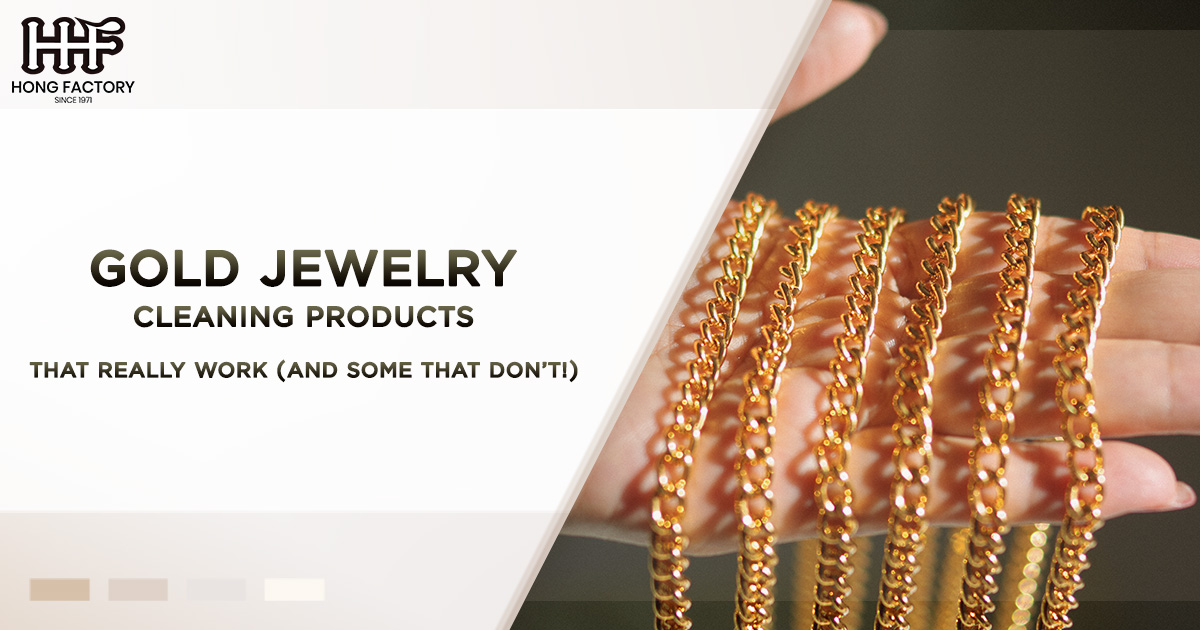
Gold jewelry is not just a fashion statement; it’s often a cherished possession that carries personal, sentimental, or even historical value. Over time, however, gold jewelry may lose its sparkle due to exposure to dirt, oils, and environmental pollutants. Keeping your beloved pieces gleaming like new requires the right cleaning solutions, safe products, and proper application methods.
In this article, we’ll explore the best gold jewelry cleaning products that are proven to work, along with a few that might not live up to the hype. Whether you own simple gold bands or intricately designed heirlooms, this guide will help you make informed choices to care for your treasures. titanium earrings for sensitive ears.
Why Proper Cleaning Matters for Gold Jewelry
Gold, while resilient, is a soft metal that can scratch or tarnish if mishandled during cleaning. Proper maintenance not only enhances its beauty but also ensures its longevity. Selecting the right cleaning solutions is critical to prevent unwanted damage, especially if your gold jewelry contains delicate gemstones, intricate designs, or other materials like enamel.
What to Look for in Gold Jewelry Cleaning Products
When choosing a cleaning product for your gold jewelry, look for the following qualities
- Gentle Formula : Harsh chemicals can damage the metal or any attached gems.
- Safe for All Gold Types : Ensure the product suits yellow gold, white gold, and rose gold.
- Ease of Application : The product should be simple to use with clear instructions.
- Non-Abrasive : Avoid products that rely on scrubbing or contain coarse particles.
Let’s dive into the best (and the not-so-good) products available.
Gold Jewelry Cleaning Products That Really Work
1. Connoisseurs Precious Jewelry Cleaner
A household name in jewelry care, Connoisseurs Precious Jewelry Cleaner is a trusted product for gold. This solution comes with a dip-style jar and a small brush, making it easy to clean jewelry in less than five minutes.
- Why It Works : Its professional-grade formula effectively removes dirt and oils without harming the gold or gemstones.
- Safe Application : The cleaning solution is ammonia-free, ensuring safe use for both karat gold and soft stones like pearls or opals attached to your gold pieces.
2. Hagerty Jewel Clean
Hagerty Jewel Clean is another gold jewelry cleaner that consistently receives high praise. This product is perfect for most gold jewelry, including pieces embedded with hard gemstones like diamonds, sapphires, and rubies.
- Why It Works : It’s a non-abrasive liquid solution designed to restore your gold’s natural brilliance.
- Ease of Use : Simply soak your jewelry, rinse gently, and pat dry. It’s effortless and safe for regular use.
3. Weiman Jewelry Cleaner
Weiman Jewelry Cleaner is a highly effective solution specifically formulated for delicate jewelry. It’s safe for cleaning gold, platinum, and various gemstones.
- Why It Works : The product dissolves grime and restores brilliance without compromising the metal’s integrity.
- Safe Formula : It avoids harsh chemicals, making it safe even for jewelry with intricate designs or multiple materials.
4. Simple DIY Cleaning Solution: Warm Water and Dish Soap
Many professional jewelers recommend this classic home remedy for cleaning gold jewelry. A mixture of warm water and mild dish soap can produce excellent results for non-tarnished plain gold pieces.
- Why It Works : Dish soap is gentle on gold and effectively cuts through accumulated oils and dirt without damage.
- Application Tips : Soak the jewelry for 15-20 minutes, gently scrub with a soft toothbrush, rinse, and dry completely.
5. Sparkle Bright All-Natural Jewelry Cleaner
If you prefer eco-friendly options, Sparkle Bright All-Natural Jewelry Cleaner is an excellent choice. It’s made with biodegradable ingredients and doesn’t contain harsh chemicals.
- Why It Works : The natural formula is safe for all types of gold, gemstones, and even costume jewelry.
- Versatility : It’s effective yet gentle, making it suitable for both vintage and modern gold pieces.
Products to Avoid : What Doesn’t Work (or Might Harm Your Gold Jewelry)
While many cleaning solutions promise sparkling results, not all deliver on their claims. Some may even damage your jewelry. Here’s what to steer clear of
1. Toothpaste as a Cleaning Agent
You may have heard that toothpaste works wonders for cleaning jewelry, but it’s actually highly abrasive. When used on gold, toothpaste can leave micro-scratches that dull its shine over time.
2. Household Cleaners Containing Bleach
Bleach-based cleaners are too aggressive for gold jewelry and can cause permanent discoloration or pitting. It’s best to avoid them entirely.
3. Alcohol-Based Solutions
While rubbing alcohol can disinfect jewelry, it’s not ideal for cleaning gold. Prolonged use can strip away the metal’s natural oils and leave it more susceptible to tarnishing.
4. Ultrasonic Cleaners (for Some Jewelry)
Ultrasonic cleaners can be fantastic for plain gold jewelry, but they’re risky for pieces with glued or delicate gemstones. The intense vibrations can dislodge stones or weaken adhesives, leading to avoidable damage.
5. Homemade Solutions with Baking Soda
Though baking soda is an effective cleaner for some metals, it’s abrasive for gold. It can scratch the surface or harm any soft gems attached to your jewelry.
Best Practices for Cleaning Gold Jewelry
No matter which product you choose, keeping the following tips in mind will ensure safe and effective cleaning
- Test First : Test the cleaning solution on a small, inconspicuous area of the jewelry before applying it fully.
- Use Gentle Tools : Always use a soft toothbrush or lint-free cloth instead of abrasive sponges or brushes.
- Avoid Overcleaning : Over-cleaning gold jewelry can wear down the metal over time. Limit deep cleaning to once every few months unless absolutely necessary.
- Be Mindful of Gems : If your gold jewelry has gemstones, ensure the cleaner is compatible with those stones. Some gems, like emeralds and pearls, are delicate and require special care.
Extra Tip : Storing Gold Jewelry Properly
In addition to using safe products and cleaning solutions, proper storage can prolong your gold jewelry’s shine. Keep your gold pieces in a dry, soft-lined jewelry box or pouch, and avoid exposing them to moisture or direct sunlight. Consider using anti-tarnish strips for additional protection.
Conclusion
With the right cleaning solutions, safe products, and proper applications techniques, your gold jewelry can retain its stunning brilliance for years to come. Trusted options like Connoisseurs Precious Jewelry Cleaner or eco-friendly alternatives like Sparkle Bright All-Natural Jewelry Cleaner ensure effective results without the risk of damage. Meanwhile, DIY methods like warm water and dish soap remain reliable and affordable.
On the flip side, avoid abrasive substances like toothpaste or baking soda and steer clear of household cleaners with bleach or alcohol. Remember, taking the time to clean and care for your gold jewelry correctly is an investment in its beauty and longevity.
By choosing the right products and following best practices, you’ll ensure your cherished gold pieces always look as dazzling as the day you first wore them!
